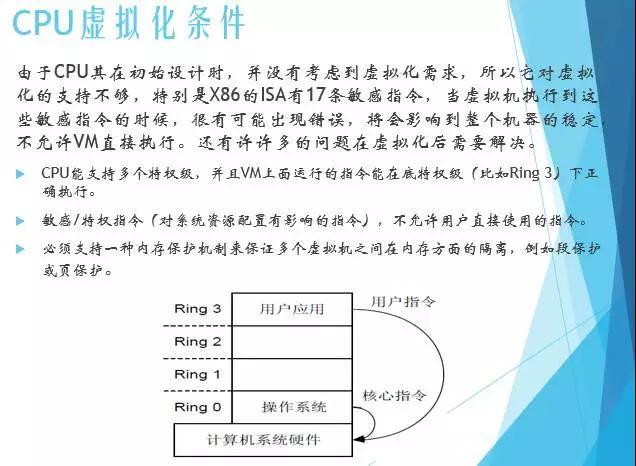Redis集群是Redis提供的分布式数据库方案,集群通过分片(sharding)来进行数据共享,并提供复制和故障转移功能。
节点
一个Redis集群通常由多个节点(node)组成,在刚开始的时候,每个节点都是相互独立的,它们都处于一个只包含自己的集群当中,要组建一个真正可工作的集群,我们必须将各个独立的节点连接起来,构成一个包含多个节点的集群。
集群配置
配置文件
下载配置文件:https://raw.githubusercontent.com/antirez/redis/5.0/redis.conf
调整 CLUSTER 节点配置
|
1
2
3
4
5
6
7
8 |
# 开启cluster集群
cluster-enabled yes
# 集群配置文件
cluster-config-file nodes-6379.conf
# 集群节点超时
cluster-node-timeout 15000 |
安装Redis
参考文章:http://www.zzvips.com/article/31228.html
准备工作
|
1
2
3
4
5
6
7
8
9
10
11
12
13
14 |
├── conf
│ ├── redis.conf
│ └── sentinel.conf
├── redis
│ ├── data_6379
│ ├── data_6380
│ ├── data_6381
│ ├── data_6382
│ ├── data_6383
│ └── data_6384
└── scripts
├── cluster.sh
├── run.sh
└── sentinel.sh |
run.sh 脚本文件
|
1
2
3
4
5
6
7
8
9
10
11
12
13
14
15
16
17
18
19
20
21
22
23
24
25
26
27
28
29
30
31
32
33
34
35
36
37
38
39
40 |
#!/usr/bin/env bash
set -e
# 脚本当前目录
cPath=$(cd $(dirname "$0") || exit; pwd)
# 根目录
dirPath=$(dirname "$cPath")
# 获取端口
port="$1"
if [[ ! "$port" ]]; then
port=6379
fi
# 创建数据目录
mkdir -p "$dirPath"/redis/data_"$port"
# 删除已启动服务
containerId=$(docker ps -a | grep "redis_$port" | awk -F' ' '{print $1}')
if [[ "$containerId" ]]; then
docker rm -f ${containerId} > /dev/null
fi
# 启动服务
containerName=redis_"$port"
docker run -itd --privileged=true -p "$port":6379 --name ${containerName} \\
-v="$dirPath"/conf/redis.conf:/etc/redis/redis.conf \\
-v="$dirPath"/redis/data_"$port":/data \\
redis \\
redis-server /etc/redis/redis.conf > /dev/null
# 获取容器IP地址
dockerIp=$(docker inspect -f "{{.NetworkSettings.IPAddress}}" "$containerName")
# 获取容器启动状态
isRunning=$(docker inspect -f "{{.State.Running}}" "$containerName")
if [[ "$isRunning" == "true" ]]; then
echo "容器:$containerName - IP:$dockerIp - 启动成功"
fi |
cluster.sh 脚本文件
|
1
2
3
4
5
6
7
8
9
10
11
12
13
14
15
16 |
#!/usr/bin/env bash
set -e
# 脚本当前目录
cPath=$(cd $(dirname "$0") || exit; pwd)
# 启动集群数量
num="$1"
if [[ ! "$num" ]]; then
num=6
fi
sPort=6378
for((i=1;i<=$num;i++)); do
sh ${cPath}/run.sh $(($sPort+$i))
done |
启动服务
执行脚本文件,默认创建6个节点
|
1 |
sh scripts/cluster.sh |
脚本返回结果
容器:redis_6379 – IP:172.17.0.2 – 启动成功
容器:redis_6380 – IP:172.17.0.3 – 启动成功
容器:redis_6381 – IP:172.17.0.4 – 启动成功
容器:redis_6382 – IP:172.17.0.5 – 启动成功
容器:redis_6383 – IP:172.17.0.6 – 启动成功
容器:redis_6384 – IP:172.17.0.7 – 启动成功
执行 docker ps 确实是否启动成功
|
1
2
3
4
5
6
7
8 |
root@DESKTOP-Q13EI52:~/docker-config/redis# docker ps
CONTAINER ID IMAGE COMMAND CREATED STATUS PORTS NAMES
c0601df1a456 redis "docker-entrypoint.s…" 27 seconds ago Up 26 seconds 0.0.0.0:6384->6379/tcp redis_6384
6fecf70465b8 redis "docker-entrypoint.s…" 27 seconds ago Up 26 seconds 0.0.0.0:6383->6379/tcp redis_6383
1af15e90b7a0 redis "docker-entrypoint.s…" 28 seconds ago Up 27 seconds 0.0.0.0:6382->6379/tcp redis_6382
6c495f31a5df redis "docker-entrypoint.s…" 28 seconds ago Up 28 seconds 0.0.0.0:6381->6379/tcp redis_6381
e54fd9fd0550 redis "docker-entrypoint.s…" 29 seconds ago Up 28 seconds 0.0.0.0:6380->6379/tcp redis_6380
be92ad2f7046 redis "docker-entrypoint.s…" 29 seconds ago Up 29 seconds 0.0.0.0:6379->6379/tcp redis_6379 |
到此为止,6个独立集群节点创建完毕,目前还无法正常工作。
创建集群
此处可以跳过,本人是为了省事
获取容器为redis_开始所有的容器IP地址
|
1
2
3
4 |
docker inspect -f "{{.NetworkSettings.IPAddress}}:6379" `docker ps | grep redis_ | awk -F' ' '{print $1}'` | sort |xargs | sed 's/ /, /g'
# 返回结果
# 172.17.0.2:6379, 172.17.0.3:6379, 172.17.0.4:6379, 172.17.0.5:6379, 172.17.0.6:6379, 172.17.0.7:6379 |
初次创建集群执行
|
1 |
./redis-cli --cluster create 172.17.0.2:6379, 172.17.0.3:6379, 172.17.0.4:6379, 172.17.0.5:6379, 172.17.0.6:6379, 172.17.0.7:6379 --cluster-replicas 1 |
输出结果
|
1
2
3
4
5
6
7
8
9
10
11
12
13
14
15
16
17
18
19
20
21 |
licas 1
>>> Performing hash slots allocation on 6 nodes...
Master[0] -> Slots 0 - 5460
Master[1] -> Slots 5461 - 10922
Master[2] -> Slots 10923 - 16383
Adding replica 172.17.0.6:6379 to 172.17.0.2:6379
Adding replica 172.17.0.7:6379 to 172.17.0.3:6379
Adding replica 172.17.0.5:6379 to 172.17.0.4:6379
M: e8da1fef656984de3ec2a677edc8d9c48d01cd95 172.17.0.2:6379
slots:[0-5460] (5461 slots) master
M: 68b925ab0fbbc1a632c1754587fb6dad3fa14c91 172.17.0.3:6379
slots:[5461-10922] (5462 slots) master
M: 0a46ab2f6d176738b55fe699c2df1c34f8200d06 172.17.0.4:6379
slots:[10923-16383] (5461 slots) master
S: bd3064ad5297dfc258e9236943455c589be8b2a3 172.17.0.5:6379
replicates 0a46ab2f6d176738b55fe699c2df1c34f8200d06
S: f1d8c897882d29e6538b1158525493b3b782289a 172.17.0.6:6379
replicates e8da1fef656984de3ec2a677edc8d9c48d01cd95
S: 619e1cb52f39e07b321719b77fc3631fa6293cef 172.17.0.7:6379
replicates 68b925ab0fbbc1a632c1754587fb6dad3fa14c91
Can I set the above configuration? (type 'yes' to accept): |
输入:yes,将平均分配槽位
|
1
2
3
4
5
6
7
8
9
10
11
12
13
14
15
16
17
18
19
20
21
22
23
24
25
26
27
28 |
>>> Nodes configuration updated
>>> Assign a different config epoch to each node
>>> Sending CLUSTER MEET messages to join the cluster
Waiting for the cluster to join
.....
>>> Performing Cluster Check (using node 172.17.0.2:6379)
M: e8da1fef656984de3ec2a677edc8d9c48d01cd95 172.17.0.2:6379
slots:[0-5460] (5461 slots) master
1 additional replica(s)
S: f1d8c897882d29e6538b1158525493b3b782289a 172.17.0.6:6379
slots: (0 slots) slave
replicates e8da1fef656984de3ec2a677edc8d9c48d01cd95
S: bd3064ad5297dfc258e9236943455c589be8b2a3 172.17.0.5:6379
slots: (0 slots) slave
replicates 0a46ab2f6d176738b55fe699c2df1c34f8200d06
M: 0a46ab2f6d176738b55fe699c2df1c34f8200d06 172.17.0.4:6379
slots:[10923-16383] (5461 slots) master
1 additional replica(s)
S: 619e1cb52f39e07b321719b77fc3631fa6293cef 172.17.0.7:6379
slots: (0 slots) slave
replicates 68b925ab0fbbc1a632c1754587fb6dad3fa14c91
M: 68b925ab0fbbc1a632c1754587fb6dad3fa14c91 172.17.0.3:6379
slots:[5461-10922] (5462 slots) master
1 additional replica(s)
[OK] All nodes agree about slots configuration.
>>> Check for open slots...
>>> Check slots coverage...
[OK] All 16384 slots covered. |
连接集群
通过客户端连接
|
1 |
redis-cli -c <端口> |
执行命令:cluster info
|
1
2
3
4
5
6
7
8
9
10
11
12
13
14
15
16
17 |
127.0.0.1:6379> cluster info
cluster_state:ok
cluster_slots_assigned:16384
cluster_slots_ok:16384
cluster_slots_pfail:0
cluster_slots_fail:0
cluster_known_nodes:6
cluster_size:3
cluster_current_epoch:6
cluster_my_epoch:1
cluster_stats_messages_ping_sent:104
cluster_stats_messages_pong_sent:120
cluster_stats_messages_sent:224
cluster_stats_messages_ping_received:115
cluster_stats_messages_pong_received:104
cluster_stats_messages_meet_received:5
cluster_stats_messages_received:224 |
看到:cluster_state:ok 说明集群已可以正常工作
客户端控制台:cluster help
|
1
2
3
4
5
6
7
8
9
10
11
12
13
14
15
16
17
18
19
20
21
22
23
24
25 |
127.0.0.1:6379> cluster help
1) CLUSTER <subcommand> arg arg ... arg. Subcommands are:
2) ADDSLOTS <slot> [slot ...] -- Assign slots to current node.
3) BUMPEPOCH -- Advance the cluster config epoch.
4) COUNT-failure-reports <node-id> -- Return number of failure reports for <node-id>.
5) COUNTKEYSINSLOT <slot> - Return the number of keys in <slot>.
6) DELSLOTS <slot> [slot ...] -- Delete slots information from current node.
7) FAILOVER [force|takeover] -- Promote current replica node to being a master.
8) FORGET <node-id> -- Remove a node from the cluster.
9) GETKEYSINSLOT <slot> <count> -- Return key names stored by current node in a slot.
10) FLUSHSLOTS -- Delete current node own slots information.
11) INFO - Return information about the cluster.
12) KEYSLOT <key> -- Return the hash slot for <key>.
13) MEET <ip> <port> [bus-port] -- Connect nodes into a working cluster.
14) MYID -- Return the node id.
15) NODES -- Return cluster configuration seen by node. Output format:
16) <id> <ip:port> <flags> <master> <pings> <pongs> <epoch> <link> <slot> ... <slot>
17) REPLICATE <node-id> -- Configure current node as replica to <node-id>.
18) RESET [hard|soft] -- Reset current node (default: soft).
19) SET-config-epoch <epoch> - Set config epoch of current node.
20) SETSLOT <slot> (importing|migrating|stable|node <node-id>) -- Set slot state.
21) REPLICAS <node-id> -- Return <node-id> replicas.
22) SAVECONFIG - Force saving cluster configuration on disk.
23) SLOTS -- Return information about slots range mappings. Each range is made of:
24) start, end, master and replicas IP addresses, ports and ids |
查看客户端提供的集群相关命令:redis-cli --cluster help
|
1
2
3
4
5
6
7
8
9
10
11
12
13
14
15
16
17
18
19
20
21
22
23
24
25
26
27
28
29
30
31
32
33
34 |
Cluster Manager Commands:
create host1:port1 ... hostN:portN
--cluster-replicas <arg>
check host:port
--cluster-search-multiple-owners
info host:port
fix host:port
--cluster-search-multiple-owners
reshard host:port
--cluster-from <arg>
--cluster-to <arg>
--cluster-slots <arg>
--cluster-yes
--cluster-timeout <arg>
--cluster-pipeline <arg>
--cluster-replace
rebalance host:port
--cluster-weight <node1=w1...nodeN=wN>
--cluster-use-empty-masters
--cluster-timeout <arg>
--cluster-simulate
--cluster-pipeline <arg>
--cluster-threshold <arg>
--cluster-replace
add-node new_host:new_port existing_host:existing_port
--cluster-slave
--cluster-master-id <arg>
del-node host:port node_id
call host:port command arg arg .. arg
set-timeout host:port milliseconds
import host:port
--cluster-from <arg>
--cluster-copy
--cluster-replace |
到此这篇关于Docker快速搭建Redis集群的方法示例的文章就介绍到这了,更多相关Docker搭建Redis集群内容请搜索快网idc以前的文章或继续浏览下面的相关文章希望大家以后多多支持快网idc!
原文链接:https://segmentfault.com/a/1190000022635846
相关文章
- 服务器虚拟化技术深度科普 2025-05-27
- 服务器租用价格怎么计算?服务器租用多少钱一年? 2025-05-27
- 云服务器的“弹性”体现在哪些方面? 2025-05-27
- 刀片服务器是什么 刀片服务器的主要特点 2025-05-27
- 利用FTP和计划任务自动备份网站数据和数据库 2025-05-27
- 2025-07-10 怎样使用阿里云的安全工具进行服务器漏洞扫描和修复?
- 2025-07-10 怎样使用命令行工具优化Linux云服务器的Ping性能?
- 2025-07-10 怎样使用Xshell连接华为云服务器,实现高效远程管理?
- 2025-07-10 怎样利用云服务器D盘搭建稳定、高效的网站托管环境?
- 2025-07-10 怎样使用阿里云的安全组功能来增强服务器防火墙的安全性?
快网idc优惠网
QQ交流群
-
2025-05-26 89
-
2025-05-27 22
-
2025-05-26 81
-
2025-05-26 93
-
Ivanti曝新的MobileIron零日漏洞,正在被恶意利用
2025-05-26 40














